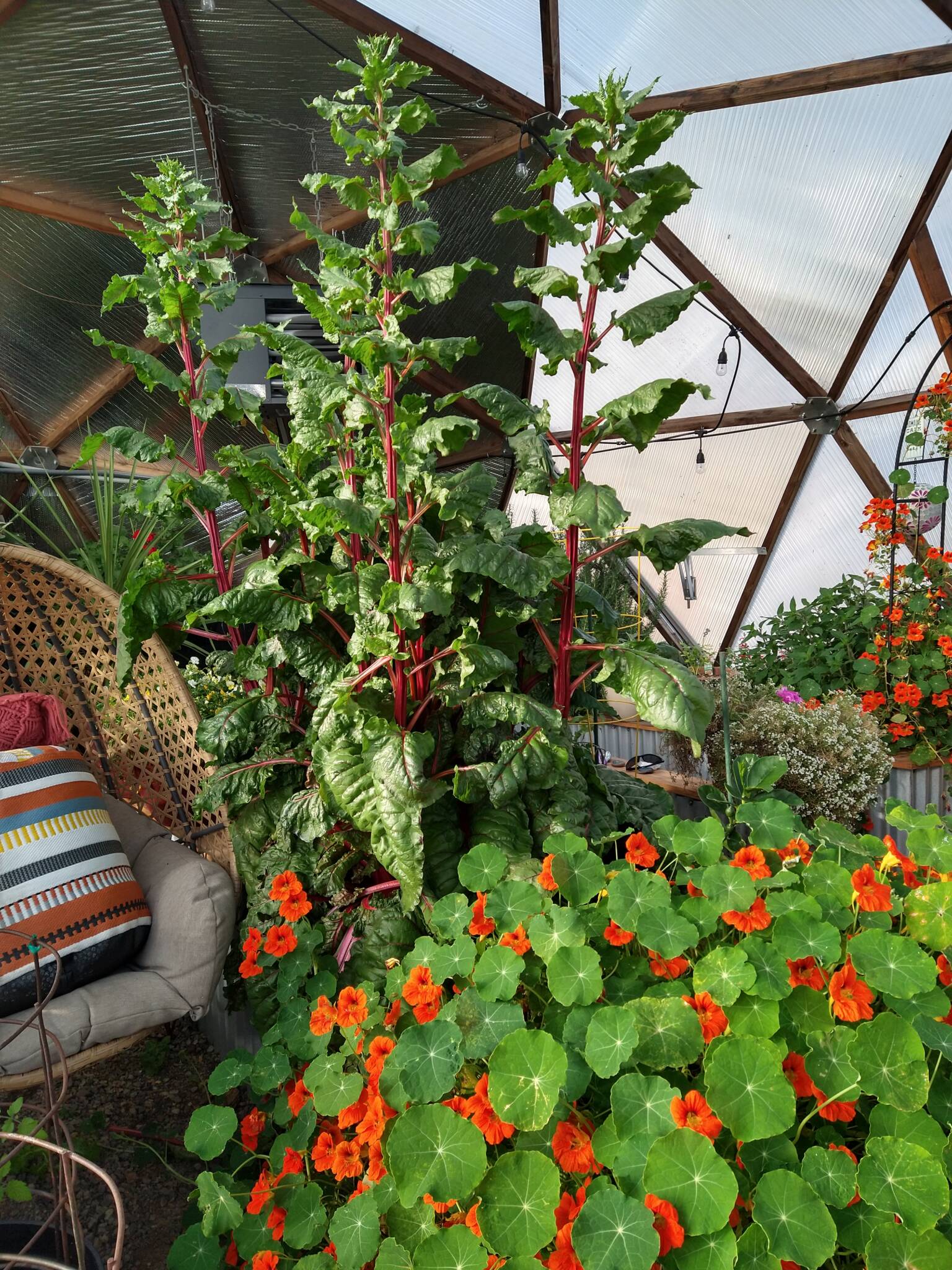
Featured Plant of the Month: Chard!
Chard, or Beta vulgaris var. Cicla is from the Amaranthaceae family, also known as the beet family and is native to the Mediterranean area and is originally from Sicily! Quite a few sources say that Aristotle mentioned growing chard (red-stalked) in 350 BC, probably because it was revered for its medicinal qualities. Whether or not that’s true, he did have a wonderful viewpoint. Here is one of my favorites: “In all things of nature, there is something of the marvelous.” Aristotle

Chard was introduced in America by the Colonists in the 1830s as it was considered a type of beet grown for its greens. Robert Buist was a horticulturist who was the primary promoter of chard in the Philadelphia area where chard became popular. He wrote the book The Family Kitchen Gardener in 1847 and chard remained a “specialty” plant as late as the 1850s. It wasn’t until after the Civil War that it was more broadly cultivated.
Chard is usually grown as a cool weather crop as it can tolerate a light frost and grows quickly, but it also does well in the summer heat. Like many other leafy, green vegetables, chard is very nutritious and is rich in vitamins A, C and K as well as iron, magnesium, and protein. It is also a great source of fiber.
Chard is a biennial plant and will bloom small yellow flowers in its second growing season. The leaves resemble beets leaves, although they have large, prominent midribs (the 6 pack of the garden) and a robust stalk. Chard prefers rich, well-drained soil with a somewhat acidic pH of 6 to 6.4. Although chard prefers 4-6 hours of sun, it will do fine in partial shade.
Types of Chard – Is all chard Swiss chard?
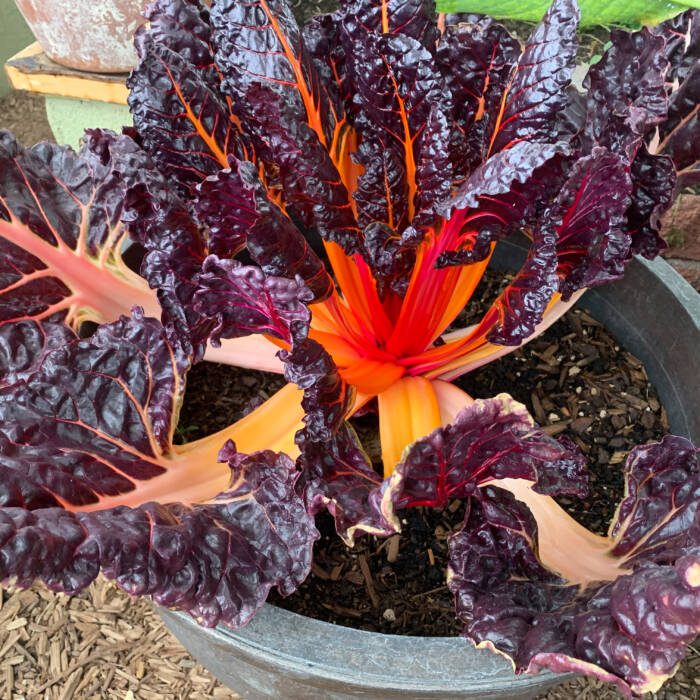
Swiss chard is a type of chard, but not all chard is Swiss chard. Chard comes in several varieties. Swiss chard is one of those varieties and it’s distinguished by its large, dark green leaves and thick, often brightly colored stalks (red, yellow, pink, or white). The term “Swiss” was used to differentiate this chard from French spinach varieties by nineteenth-century seed catalog publishers. However, other types of chard can have different characteristics. For example, Rainbow chard is a mix of chards with different colored stalks, and Rhubarb chard has reddish leaves and stalks.
Growing Chard
Chard is an easy plant to grow and it’s beautiful! While some grow it for food, others grow it as an ornamental plant. You can direct sow seeds outside two-three weeks before the last frost in your area, but in your Growing Dome you can start seeds in early spring and in late summer for your fall/winter harvest.
Plant seeds ½-¾” deep and about 2 inches apart. You will most likely need to thin your seedlings, but it’s best to cut some out so you do not disturb the roots of the chard you are keeping. Chard likes full sun and will tolerate some shade, but it grows amazingly in the dome; we have some that are 3 feet tall! It loves rich soil with good drainage and a lightly acidic soil pH, but doesn’t mind a neutral soil.
We always recommend testing your soil so your plants will have what they need to thrive. Chard likes moist soil, but be sure it’s not soggy! If you haven’t perfected the finger test, a moisture meter is a good investment.
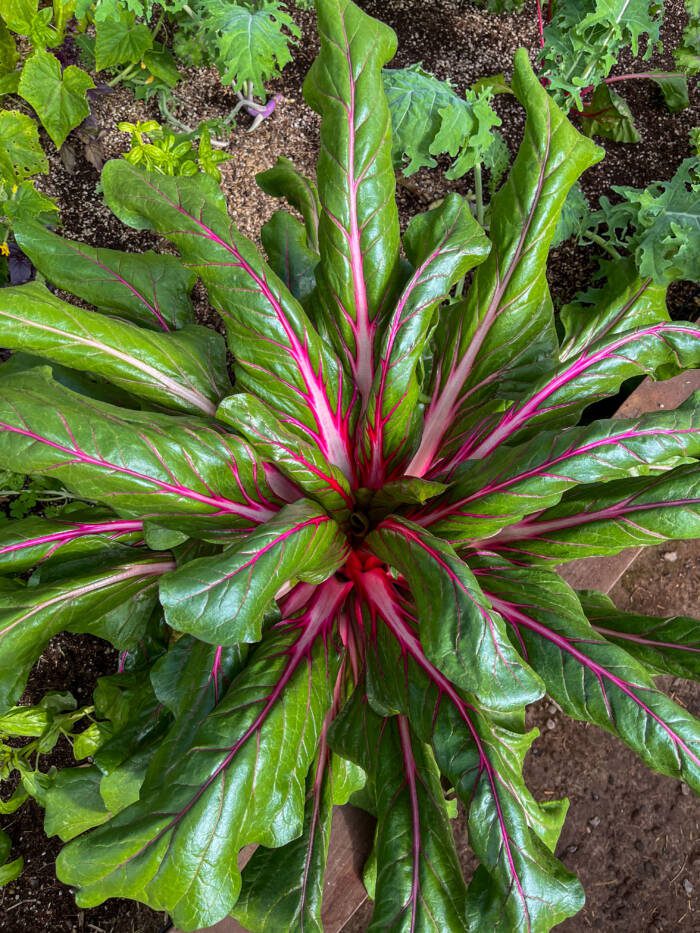
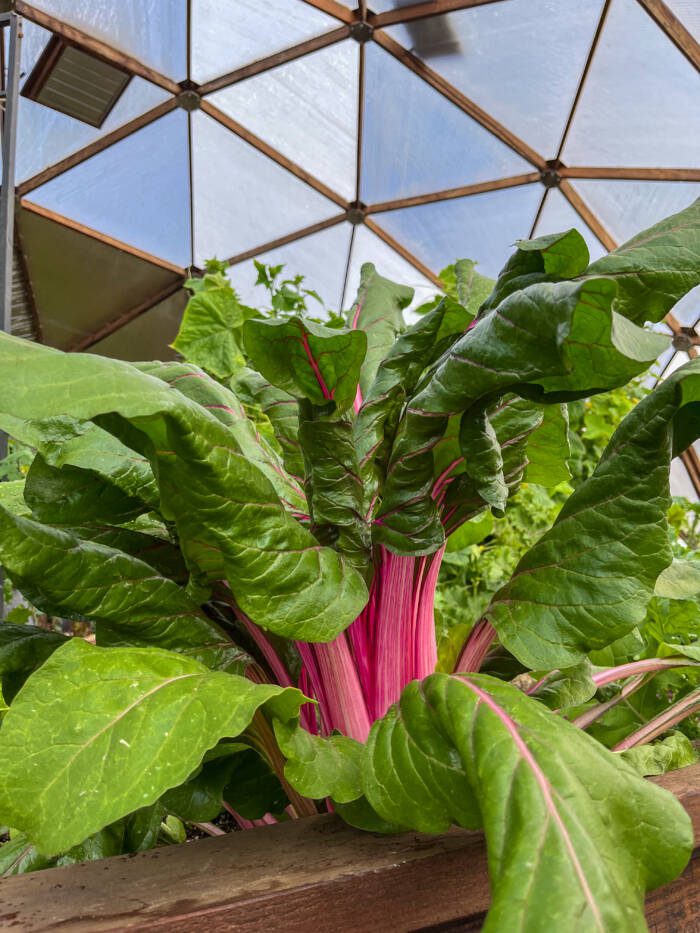
Growing Chard Fun Facts
- Chard is thought to be related to the wild beet so, you know…”The “beet” goes on….La de da de de, la de da de da.” 🎶I know, you’re going to take one of your white gloves off and tell me to “Beet it”. 😂
- Did you know that chard has a plethora of nicknames? That’s probably because it’s so well liked! Chard is called silverbeet, Chilean beet, Sicilian beet (inconceivable!), spinach beet, crab beet, white beet, bright lights (big city?), Roman kale, perpetual spinach and mangold. Whew! Chard can grow up to 2’ tall, but that must be outside because we have seen it taller in the Domes!
- Chard leaves have so much amazing organic matter in them that they were used in Canada in the 1870s as green manure and plowed into the soil to nourish it.
- Did you know that some gardeners refer to chard as the stained glass of the garden?
Chard Companion Plants
Let’s talk about companion plants again because it’s an amazing method to use as a tool in your garden! Chard is an easy-going plant to grow and is happy with a variety of neighbors. Here are some of the top companion plants to grow with chard. Alliums such as garlic, chives, and leeks have a strong odor that tends to repel undesirable insects and when they flower, they attract beneficial insects! Marigolds, nasturtiums and sweet alyssum repel pests, attract beneficial insects and sweet alyssum acts as shade for the soil in your garden beds and helps keep weeds at bay and they look beautiful next to chard.
Chard and cabbage are very good friends along with other Brassica members. Celery and chard grow well together as celery has a shallow root system and grows nicely alongside chard. Bush beans and peas help chard by fixing nitrogen in the soil, but avoid pole beans as they provide too much shade for your sun-loving chard.
As far as herbs, cilantro is a friend, but the best herb to plant near chard is mint! Mint is very attractive to those beneficial insects you want in your greenhouse and it can help keep flea beetles away. It’s very important to plant mint in a pot or container and not in your garden bed as it will take over the whole bed. Some plants to avoid as chard companions are members of the Cucurbit family as they are vines and would tend to strangle your chard (not very neighborly!). Visit the Farmers’ Almanac Companion Planting Guide: Sow Easy to learn more.
How to Harvest Chard
Chard is typically ready to harvest in 50-60 days when it’s close to 12” tall. Snap off the glossy, outer leaves and it will continue to grow. It’s best to pick chard in the early morning or evening as it can wilt if harvested in the heat of day and it’s less bitter when the weather is cooler. Chard is crunchier than spinach and more tender than kale so it makes a wonderful addition to a fresh salad, especially young chard as it is sweet. Try grilling or roasting the stems as a substitute for asparagus. It is also used in cooking and may be blanched and frozen the same as spinach. If you’re growing it as an ornamental in your dome let us know if it gets taller than this 5 foot tall chard in Leslie and Tommy Kearney’s dome!
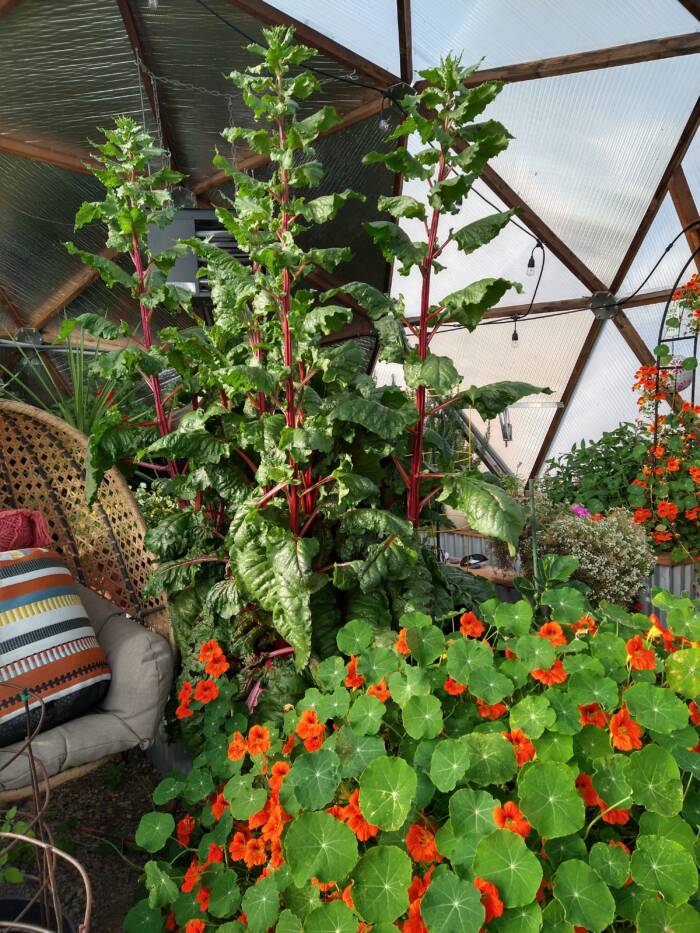
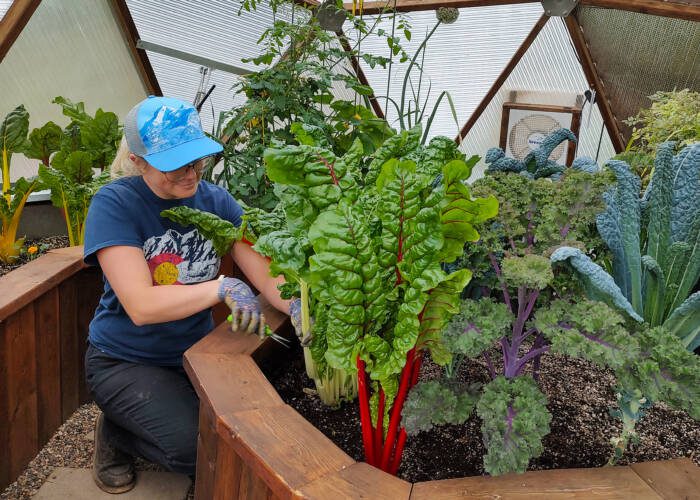
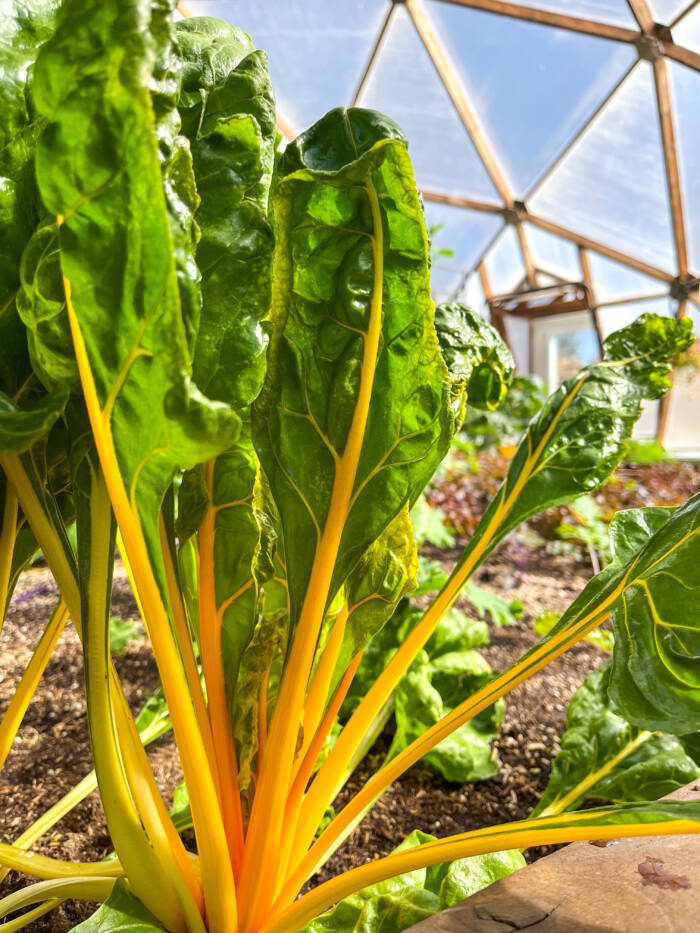
Join the Inner Circle
An exclusive place for year-round gardeners. Join us to receive our monthly newsletter, “The Happy Grower”. In our newsletter we provide community stories, event updates, expert gardening tips, and exclusive offers.
